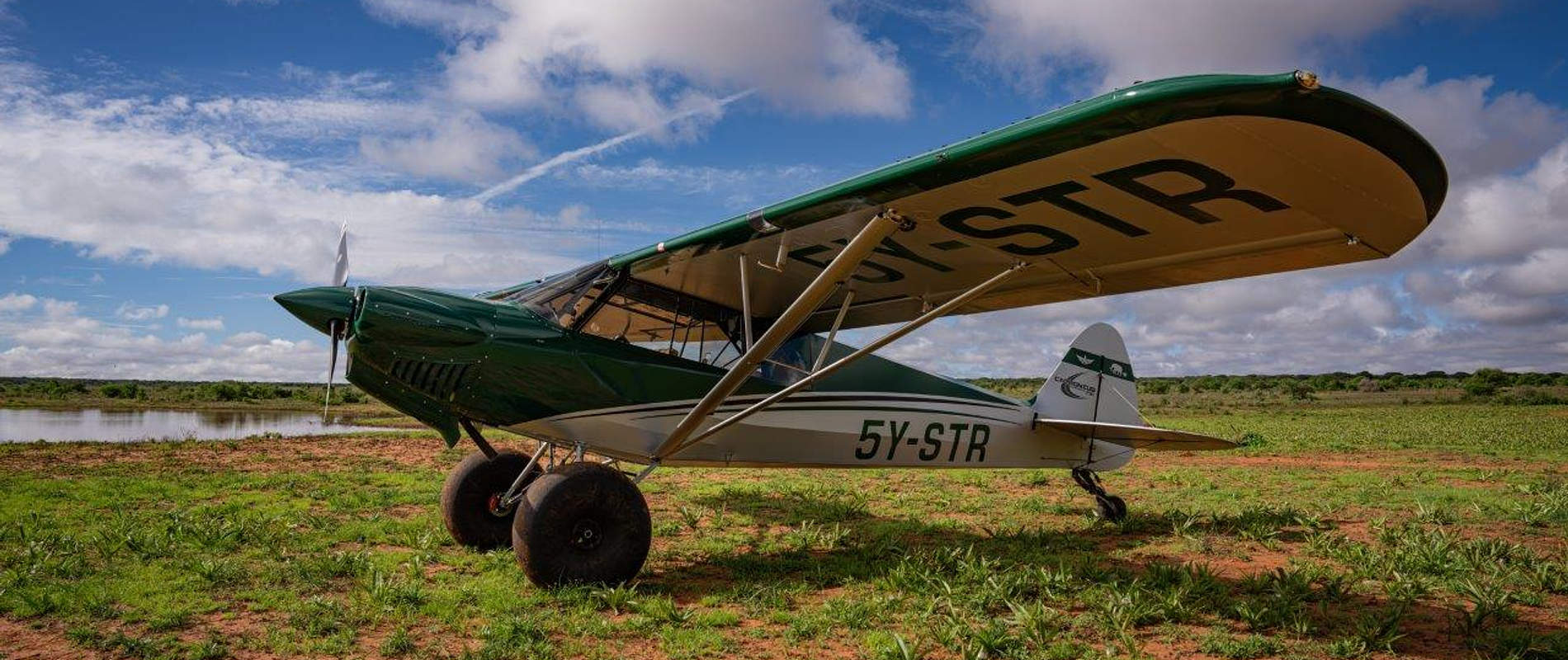November was a relatively uneventful month for the Aerial Unit, which is to be expected with the onset of the rains. This was particularly true this year, as the widely anticipated “El Niño” rains arrived in full force.
Most people returned to their farms to prepare their fields. The only exception are the pastoralist communities who enter the Park with large numbers of livestock. They are attracted, of course, by fresh grazing, but also by newly accessible parts of the park that are now abundant with waterholes and are inaccessible to KWS vehicles. There was a marked increase in livestock incursions in both Tsavo East and Tsavo West. It should be noted, however, that following a three-month effort to destroy many semi-permanent livestock enclosures that have been built in Tsavo West over the years, there is a significant reduction in livestock compared to previous years.

What was disheartening was a massive influx of livestock into the Chyulu Hills National Park. On one flight over the ecosystem, a total of 15 livestock enclosures were recorded. The hills have been mostly livestock-free for several months. Also of major concern was an even larger influx of livestock and people into Galana Wildlife Conservancy (GWC), where over 250 temporary houses were reported along with thousands of associated livestock utilising grazing both in GWC and the neighbouring Tsavo East National Park.

No poaching activity was recorded by the Aerial Unit in November, although old signs of honey harvesting were observed on one helicopter patrol. A single elephant carcass was sighted; however, it was a very old carcass with bones scattered and tusks present, indicating a high likelihood the elephant died of natural causes. The Aerial Unit was called out to respond to a report of a potential gunshot heard inside a rhino area in Tsavo; however, despite an extensive search by both fixed wing and helicopter in the area, nothing was found.

Even cases of human-elephant conflict were greatly reduced in November. This is perhaps is unsurprising, given that elephants generally spread out within huge areas of the Park during the rains and are not concentrated around just a few water sources (especially those that are man-made). Add to this that crops have only just been planted in November and aren’t yet tempting to crop-raiding elephants. A total of four cases were responded to, three of which resulted in elephants being pushed back into protected areas.

Other callouts in November included the rescue of two KWS rangers whose remote camp had become separated from the rest of the park by a flooding river. They were collected in a helicopter and transported to a more permanent KWS outpost to wait out the flood waters. Another callout involved a lion that gotten stuck inside the fenced area of Rhino Base and was unable to get out. With help from the helicopter, he was successfully pushed out of the fenced area.

Highlights in November included the sighting of a large male leopard on the eastern side of the Yatta Plateau, a large herd of approximately 250 elephants enjoying abundant, fresh vegetation in Tsavo East and several rhino sightings.
